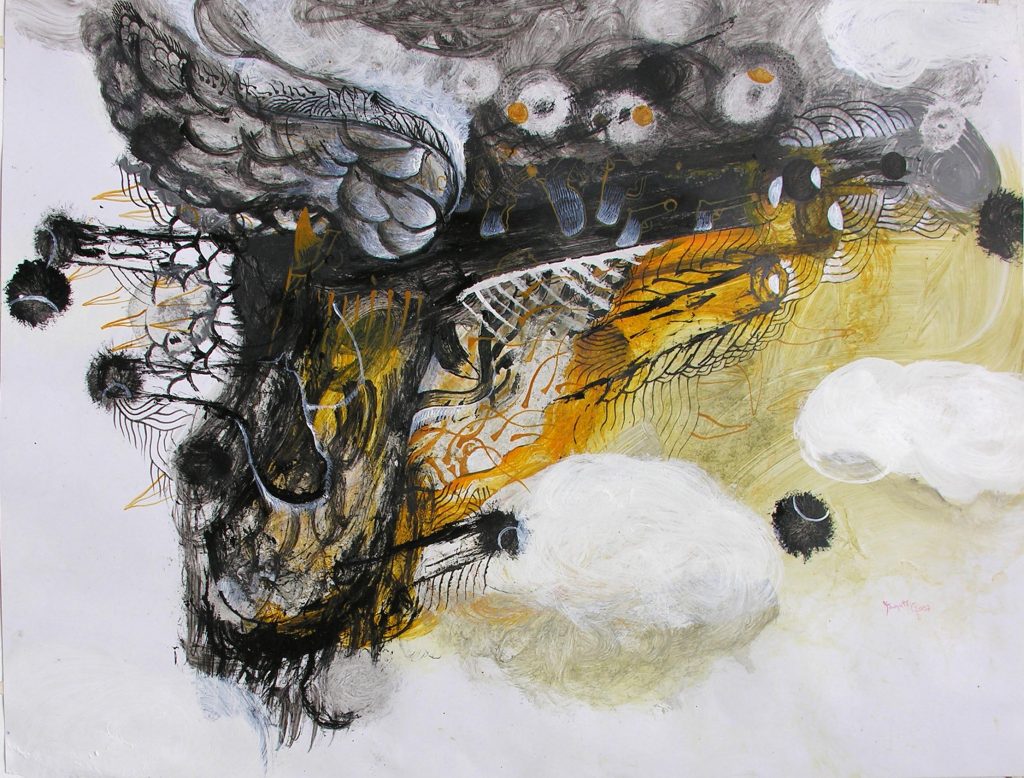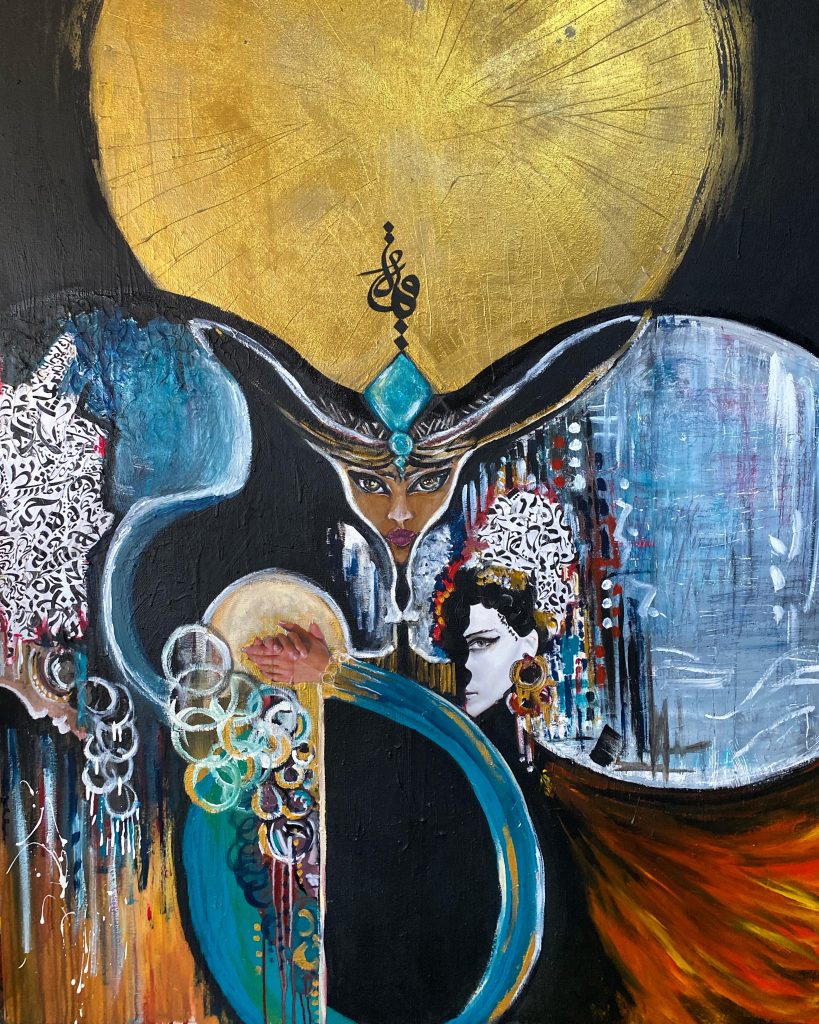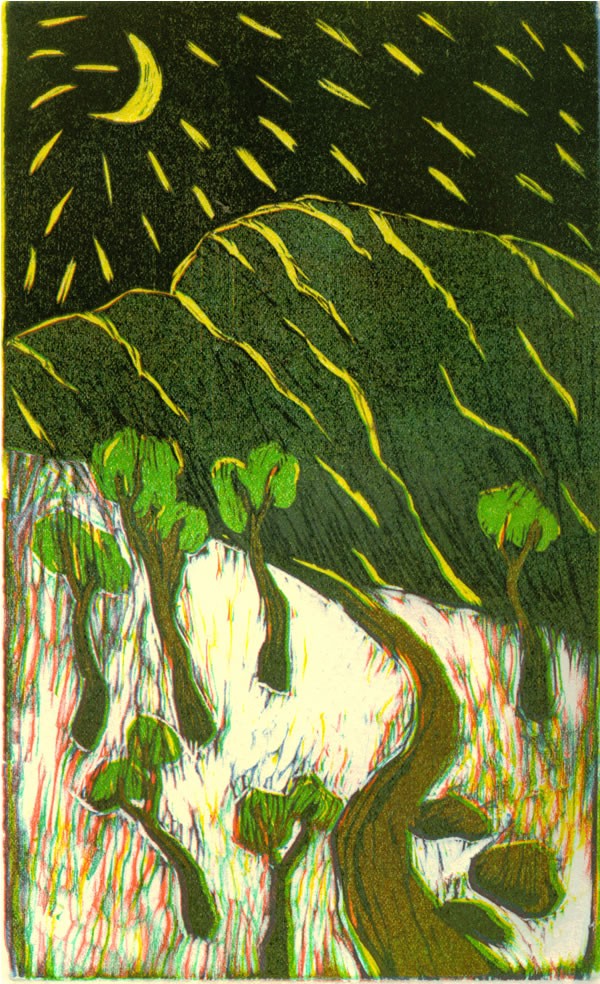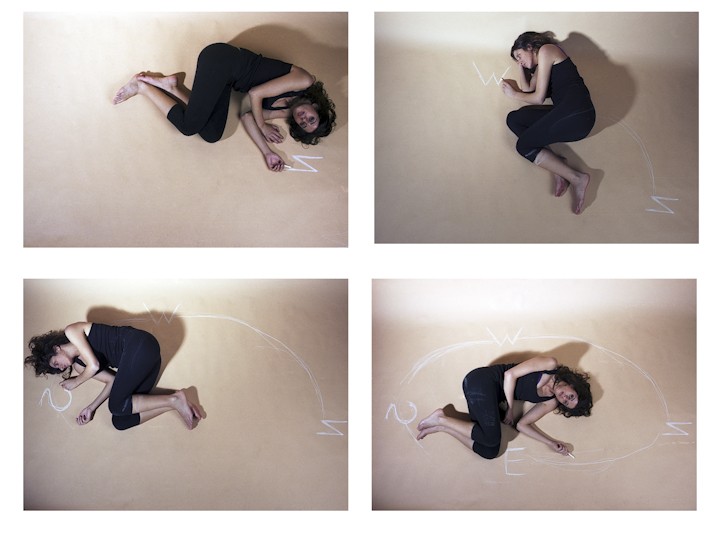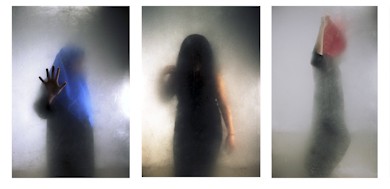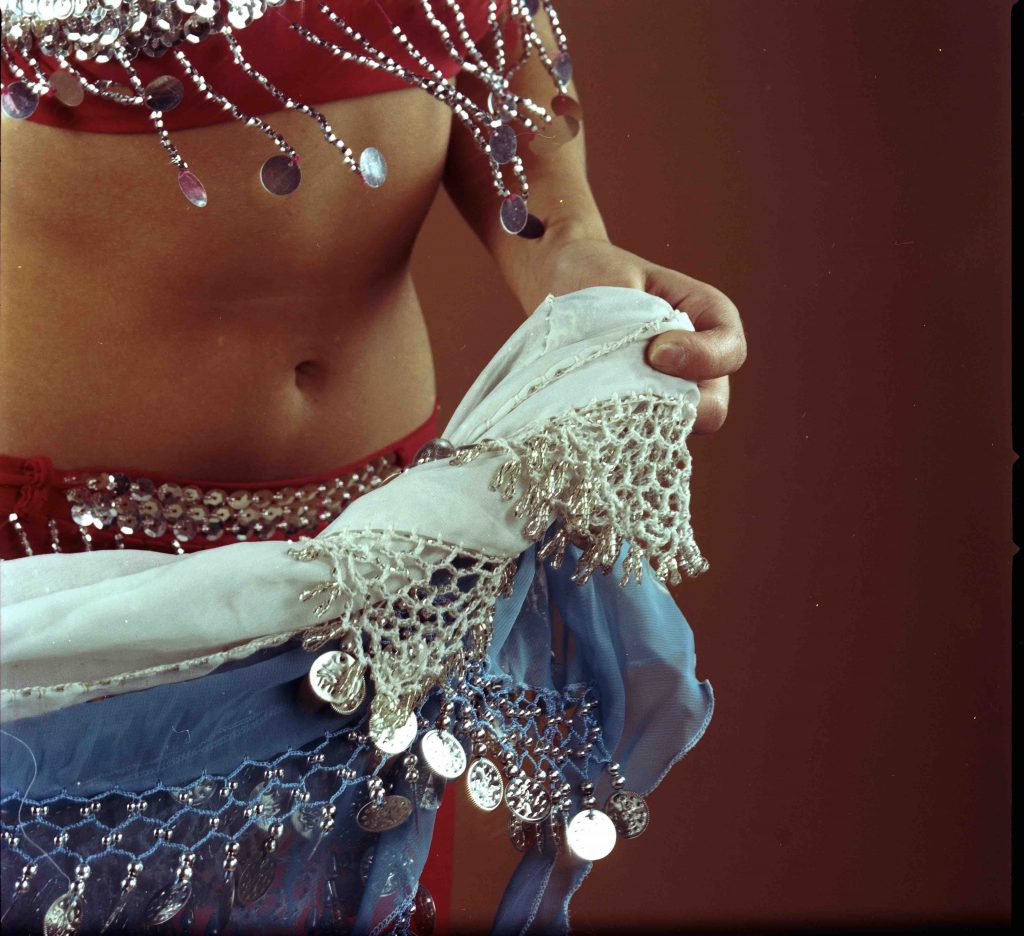Collected Photographs (1982-2017)
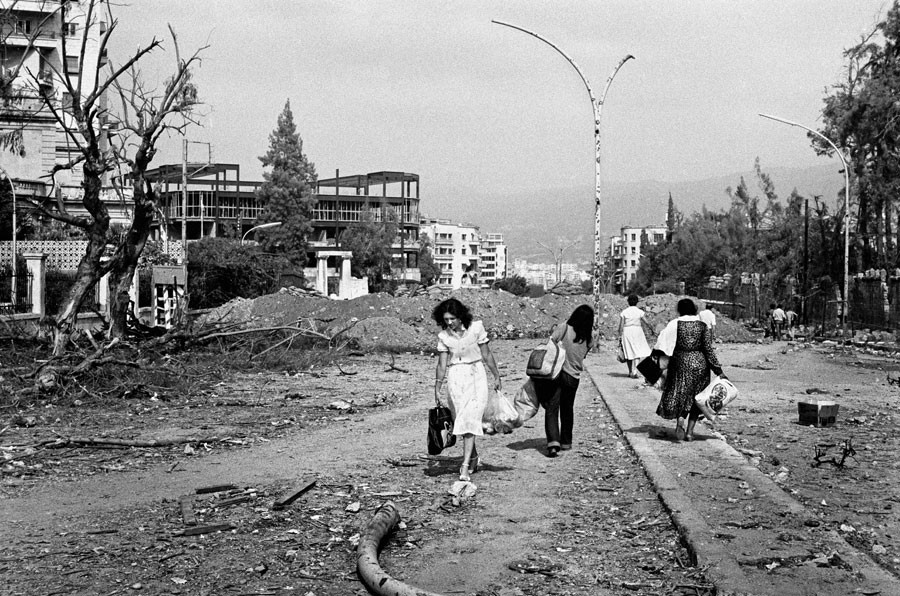
I was coming from West Beirut towards the National Museum, which, during most of the civil war, was a check point separating West Beirut from East Beirut. In 1982, when I shot this image, West Beirut was under siege. There was little to eat, so most people were progressively crossing to go to East Beirut, carrying whatever they could take with them. Except this woman, dressed in white, wearing high heels, who was coming back to West Beirut. I was so intrigued by her that I waited for her to be near me before I took the picture.
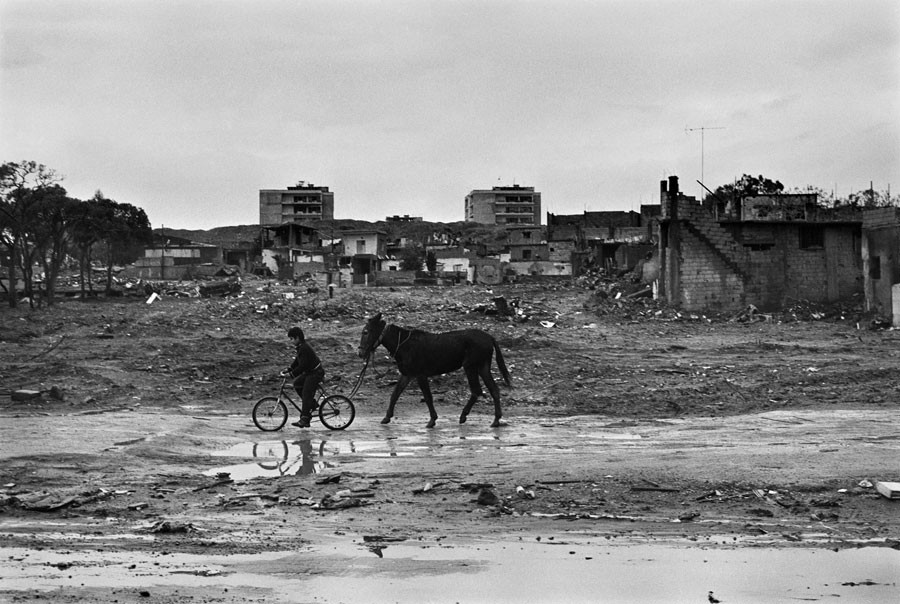
This picture was shot in 1982, a few days after the massacre that happened in the Palestinian camps of Sabra and Shatila in the outskirts of Beirut. Perpetrated by Christian militiamen in response to the assassination of Bachir Gemayel, the president elect, they were guided by the Israeli forces who oversaw their actions form the rooftops of two buildings situated nearby, seen in the background of the image. The air was filled with mourning, I stood by the mass grave behind me, and waited for this boy on a bicycle pulling a mule to pass by.
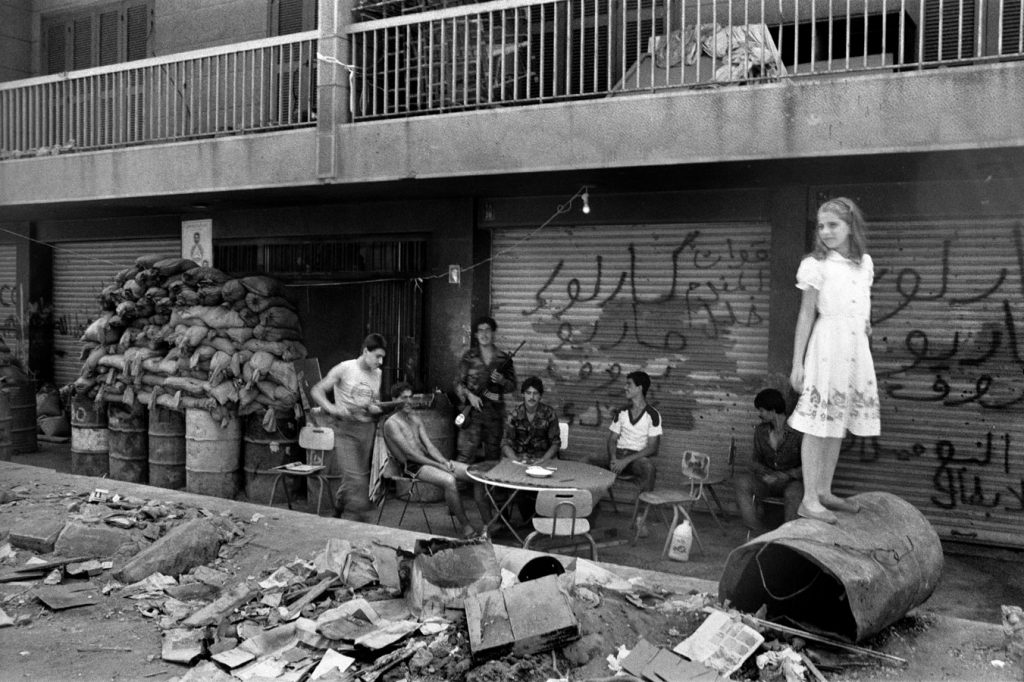
In any country of the world, if one was to remove the weapons and the sandbags that appear in the photo and tell about the war, one would clearly say that this is a girl showing herself to the militiamen, unconsciously showing off. “Look at me” could have been the title of this image. This in itself is moving. But when one adds the war layer, that this scene happens in a context of battles, it becomes even more touching.
One remark: I remember taking this picture rue de Damas in Beirut, yet the sign of the Progressive Socialist Party is clearly recognizable behind the sand bags. This is intriguing as this party didn’t have a base in this area in 1984. Or else, I shot the picture somewhere else and I forgot.
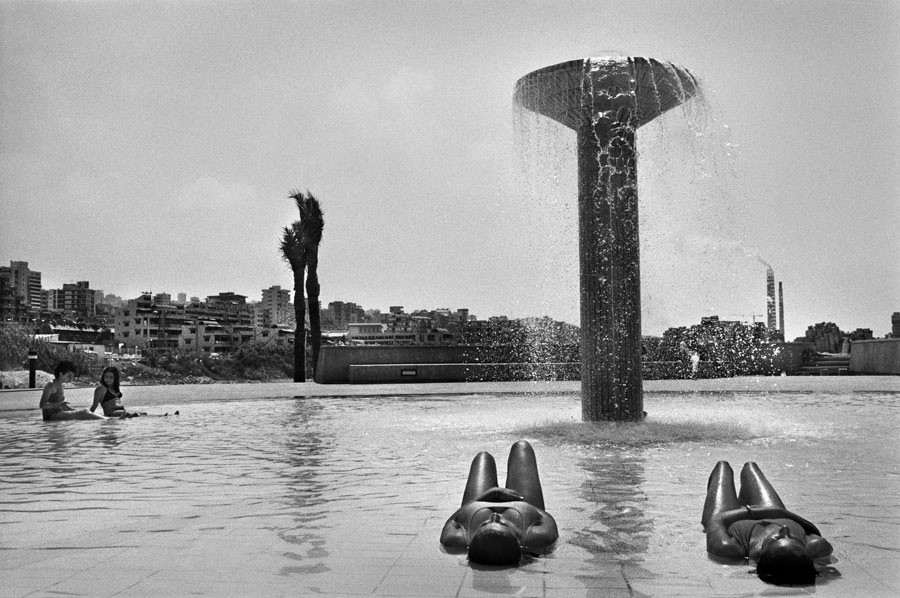
In 1984, I was invited to a sort of beach club, in reality a development of small beach booths illegally built on the fringe of the Mediterranean Sea. I was living in West Beirut, and I had to pass through a couple of check-points to get to this place situated in the suburbs of East Beirut. When I got there, I was doubly shocked: by the apparent peace and serenity of the place if one was to compare to West Beirut, and by a certain display of vulgarity. This image summarized best my feelings that day.
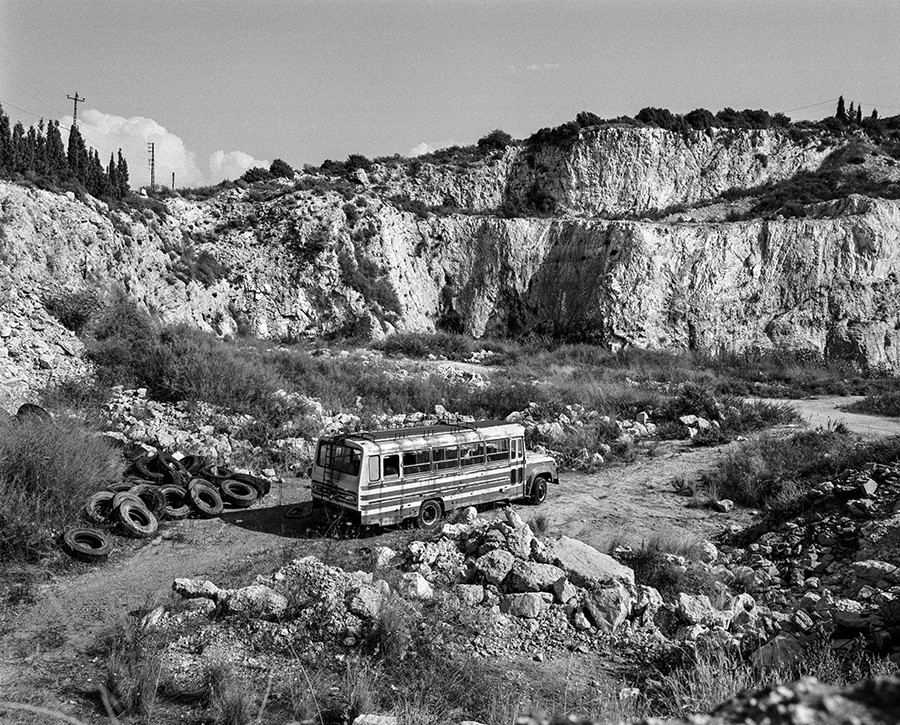
This picture was shot in 2017 in a place called Fghal, (فغال) a locality I passed by on my way to the mountain, where I noticed an old quarry that served as a dumping ground. I had, by then, adopted the use of a middle format camera which implied more thoughtful poses. The place struck me as being forgotten, where time had stopped passing, abandoned except for the presence of this bus. This is what pushed me to take the picture, I imagined it to be the bus that had triggered the civil war in Lebanon in 1975.

Acquiring big surfaces of land and divide them into smaller lots for sale, with or without a house on them, has become one of the means of making a lot of money in Lebanon. In the Chouf region, one of the politicians who run the country had acquired this hill, wounded it to open roads on it and develop it into independent lots. Such a development is bound to sadden me, as, from my early youth, my father would take me around Lebanon to pass on to me what he regarded as the immense beauty of the scenery. Necessarily, treating nature in terms of how much money one can make out of it calls out to the photographer that I am.
Description
Out of the six photographs by Fouad Elkoury shown here, four were taken during the civil war, two of which date to 1982, the year that the Israeli army invaded Beirut. They portray civilians partaking in the dearth of pastimes allowed by the war or on the move during times of mass displacement. In one of the photographs, a young girl showcases her dress in front of a group of men gathered at what appears to be a Progressive Socialist Party military base; the lightheartedness of the social gathering takes precedence over the somber order of things. In another, a boy riding a bicycle pulls a mule behind him in the vicinity of the Palestinian Sabra and Shatila camps, days after the abhorrent massacre perpetrated by right-wing Christian militias under the auspices of the Israeli army.
Throughout Elkoury’s oeuvre, there is a striking affinity for the intimate, affective, and interpersonal, set against a forbidding landscape. A strident urge to document the dominant atmospheres of the war is coupled with an offbeat and subtly mischievous gaze on the minutiae of everyday life.
Elsewhere, we see the bare skin of two women enjoying the sun at a beach resort, where the viewer may be forgiven for forgetting that the brilliant sun is illuminating a country drowned in its own bloody violence. As though this image, taken in the middle of the civil war, foretold the psyche of the postwar period. It reveals a perpetual pursuit of a shiny veneer, as if in an attempt at occupying a present amputated from its past. In the 1980s, Elkhoury published the photograph under the title of Guerre du Liban (War of Lebanon) in a collection of postcards in Paris. It is telling that when requested to present one picture to sum up the Lebanese war for this collection, Elkhoury chose one that showed the contradictions of the state of war; here, the violence is latent until it is conveyed by the title of the photograph.
The final two photographs, taken in the 2010’s, are devoid of human presence. One of the two depicts an abandoned bus in the middle of an open quarry, almost instantly channeling the Ain el Remmaneh bus massacre that broke the camel’s back and set off the events that came to be known as the civil war. The recent photographs mark a shift away from human subjects, towards the landscape and slower forms of violence, documenting a land serrated and quarried by the boundless extractivism of Lebanese neoliberal sectarian-clientelism.
Press
His body of work reflects on memory, history and transition.

